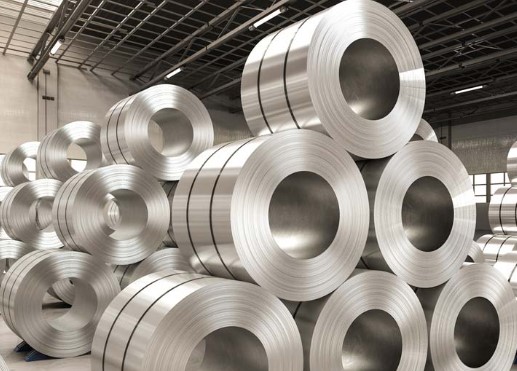Aluminum, Lead and Zinc
An overview of industrial metals
Aluminum has many end markets, including automotive, aerospace, and packaging. The transportation sector is particularly keen to save on fuel costs. By reducing the weight of vehicles, it can reduce fuel consumption by seven to twenty percent. Several aluminum alloys have also proven to be highly durable and long-lasting. Ultimately, these metals contribute to the overall health and safety of our society. And we can't forget about the environment! Aluminum's value-added products and services are transforming the world.
Production of aluminum from alumina and bauxite is energy-intensive. Approximately 21 kWh of electricity is consumed per kilogram of aluminum. However, advances in technology have helped aluminum production become more energy-efficient, reducing its carbon footprint to less than 12 kg CO2eq per kg. Furthermore, the process uses a lot of water, which results in a four-hundred and forty-five litre per kilogram of aluminum.
The conversion of alumina to aluminum takes place inside a steel vat called a reduction pot. The bottom of the reduction pot contains carbon, which acts as an electric conductor. In this process, carbon rods are suspended over the molten aluminum and connected to power sources. The entire process takes a few hours, but the resulting product is pure aluminum. The metal is then melted and refined into a metal called aluminium.

Zinc and Uses
Listed in the Periodic Table of Elements, zinc is a trace element. While most zinc is used as an alloy in brass and other metals, it also has a variety of industrial uses. Zinc is used in the manufacturing of anti-dandruff shampoos and other skin care products. It is also used as a dissolving agent in ceramic glazes, fluorescent lights, and surgical dressings. Because it is so flammable when dry, it is also a common ingredient in fireworks and rubber additives.
Today, more than half of the world's zinc is used in the production of steel and iron. Galvanizing metal is a common application of zinc, and accounts for nearly half of the zinc used every year. By coating metal with molten zinc, a layer of the metal is protected against corrosion and wear. This process extends the lifespan of an average vehicle, making it an environmentally friendly, affordable way to build sustainable infrastructure. In addition, zinc also protects steel, which is an essential part of renewable energy infrastructure.
However, as the production of zinc increases, more of it ends up in the environment, where it can harm ecosystems. It also contaminates waterways. Many industrial facilities do not purify their wastewater, resulting in deposits of zinc-polluted sludge on riverbanks. It can also cause acidity in water bodies, so some fish may accumulate zinc while living in such waters. This is unfortunate, because zinc pollution is a significant threat to the environment.
Lead
Lead is a naturally occurring metal that has a Mohs hardness of 1.5 and is ductile. Lead alloys are only slightly resistant and are easily rolled and formed into wires. Lead is a noble metal compared to many commodity metals.
Because lead is chemically inert, it is often used in pipes and wiring, including water pipes. Lead was also widely used in the construction of gasoline tanks, insulators, and car batteries. Lead accumulators accounted for over 60% of the world's lead production in 2009! And the list goes on. Lead is still in use today and its many uses are only limited by your imagination. There are many potential uses for the metal.
Although there are many benefits of lead, it is still highly toxic. Lead has been considered to be safe for most applications, but this has changed. The main culprits are the manufacturing industry, mining, and metal industries. Inhaling lead particles is dangerous, and even lead paint chips are consumed by children. Fortunately, government agencies have implemented regulations that restrict the use of lead in many products. This has significantly reduced the incidence of lead poisoning. But its long-term health effects are still not fully understood.
Day trading articles
- Articles menu
- Daytrading
- Pivot Points
- Dow Jones History
- Elliott Wave Basics
- Mind The "Gap"
- Commodity Trading
- Oil Futures Details
- Oil Economics
- Natural Gas
- Copper
- Cryptocurrency
- Valuation of Oil
- What is Spot Gold Price?
- Trading Gold Prices
- About Foreign Exchange
- About Money Transfers
- Origin of the FTSE 100
- AIM All Share Index
- Aluminum, Lead & Zinc
- Lithium and Mining
- Uranium, Rhodium,Cobalt
- Iron Ore, Nickel, Tin
- The Dow and Nasdaq Index
- About Hang Seng Index
- Chart Indicators
- Long Term Charts
LIVE INDEX CHARTS
- Dow jones chart
- S&P chart
- Nasdaq comp chart
- Nasdaq 100 chart
- Dax 40 chart
- Cac40 chart
- Swiss smi chart
- Nikkei chart
- Vix chart
- Hang seng chart
- Australia ASX chart
- Spain 35 chart
- Euro Stoxx 50 index
- Nifty 50 index
OIL AND METAL CHARTS
- Gold chart
- Silver chart
- Copper price chart
- Platinum price chart
- Palladium price chart
- Crude oil chart
- Brent oil chart
- Natural Gas chart
- Wheat Futures chart
FOREX CHARTS
- EUR/USD chart
- GBP/USD chart
- USD/JPY chart
- USD/CHF chart
- AUD/USD chart
- EUR/JPY chart
- GBP/JPY chart
- USD/CAD chart
- GBP/CHF chart
- EUR/GBP chart
- GBP/EURO chart
- EUR/CHF chart
- US Dollar Index
- Global currencies
CRYPTOCURRENCY
- Bitcoin Chart
- Bitcoin Euro Chart
- Bitcoin GBP Chart
- Ethereum Chart
- Ethereum Euro Chart
- Litecoin Chart
- Litecoin Euro Chart
- BNB Live Chart
- BNB GBP Price
- Shiba Inu Chart
INDUSTRIAL METALS
- Nickel price
- Iron Ore price
- Rhodium price
- Uranium price
- Aluminum price
- Lithium price
- Lead price
- Tin price
- Cobalt price
- Zinc price


